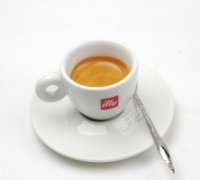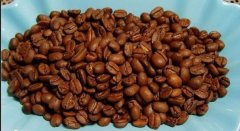The specific steps of hand brewing coffee
First of all, the tools it requires are simple and easy to operate, including:
Kettle: the kettle of hand-brewing coffee is different from the ordinary kettle in that its mouth is relatively thin, and the spout is located in the lower part of the kettle body, which has the advantage of adjusting the thickness of the water flow and controlling the water flow.
Filter pot: generally transparent glass pot, graduated, easy to observe the amount of water.
Filter: filter is divided into single-hole Merita, three-hole Karita, more professional kono and Harrio, general household use three-hole Karita. This is easy to operate.
Filter paper: filter paper is generally matched with the filter, what brand, size of the filter corresponds to the corresponding filter paper.
Thermometer: for beginners, it helps to better adjust the water temperature. Generally speaking, the water temperature for making coffee is about 90 degrees. If the water temperature is too high, it will hold.
It is easy to be bitter and astringent, the water temperature is too low and it is easy to lack extraction.
Specific operation steps:
First, fold the filter paper.
Fold the side of the filter paper and the edge of the ground in the opposite direction of the crease, neatly and smoothly, and the side and bottom fold in the opposite direction. Then flatten the crease with your hand and stretch it into a cone.
Second, grind beans.
1, the amount of coffee beans.
Generally, 10 grams of beans are used for a cup of coffee, 20 grams for two cups of 18 murmurs, and 25 grams for three cups, which can be adjusted slightly according to personal preferences. Use a special spoon of coffee beans, one spoon is 10 grams.
2, degree of grinding.
Generally speaking, hand-brewed coffee belongs to rough grinding. This is determined by its extraction method and extraction time, short-time rapid extraction Ruyi concentration usually uses fine grinding, while hand-brewed coffee if ground too fine, the taste will be too bitter, and coffee powder is easy to clog filter paper.
At the same time, the degree of grinding depends on the depth of baking. The shallower the baked beans, the thicker the grind should be.
Third, coffee powder is packed.
Put the ground coffee powder into the filter paper, put it into the filter, and gently shake the filter with both hands to keep the coffee powder surface level.
Four, warm the cup.
Pour the boiled water into the kettle, then pour the water into the filter kettle, warm the filter pot and then pour it back into the kettle, so as to keep the appliance warm and reduce the high temperature of boiling water to an appropriate temperature of about 90 degrees.
At this point, the preparatory work before extraction is ready. Begin to move on to the most critical step.
Fifth, extraction.
1, steaming.
Use about 10 milliliters of water to control the flow very fine and soft, gently inject the coffee powder like spring rain to moisten the wheat field, wet and moisturize the whole coffee powder. The main purpose of this process is to expand the example of coffee powder and discharge the carbon dioxide gas, laying a good foundation for the next step of water injection.
Steamed coffee powder will be like bread, the surface will expand into a plump arc.
2, brewing for the first time.
After steaming, it begins to brew for the first time for about 20 MULTH 30 seconds. Take the center point of the coffee powder as the center, inject water by drawing a circle with appropriate fine water flow, and remember that the water flow does not touch the filter paper directly, and pay attention to keeping the circle within 1 cm from the edge of the coffee powder. The current height is maintained at about 4cm with the coffee powder plane 3murmur4 cm. The amount of water injected for the first time accounts for 60% of the total amount of coffee.
3, the second brewing.
Pause after a bubble, wait for the water in the coffee powder to flow down completely, start the second water injection, the method is the same bubble. The amount of water injected accounts for 30%.
4, the third brewing.
In the final step, the amount of water generally accounts for about 10%.
After three bubbles, separate the filter from the filter pot.
Coffee powder residue
Pour the coffee into the cup.
Sixth, tidying up and cleaning.
1. Wash the coffee residue from the filter pot with hot water.
Pour out the coffee powder residue together with the filter paper, clean the filter, and put the tool back into place.
Finally, you can enjoy the delicious coffee in the fresh pot!
Important Notice :
前街咖啡 FrontStreet Coffee has moved to new addredd:
FrontStreet Coffee Address: 315,Donghua East Road,GuangZhou
Tel:020 38364473
- Prev

Factors that affect the taste of a cup of coffee
Among the factors that affect the taste of a cup of coffee: raw beans account for 60%, roasting accounts for 30%, and extraction accounts for 10%. So let's take a look at the whole process of coffee life, that is, from a seed to a cup of coffee, to understand each factor on the taste of coffee one by one. Raw beans: only good materials can make a good taste. This is an immutable truth in the catering industry. The quality of raw coffee beans determines the taste of coffee.
- Next

Several elements that should be paid attention to in the preparation of steaming before making coffee
Steaming is a very important link in the process of making hand-brewed coffee. Good steaming can fully infiltrate the coffee powder and activate the coffee activity, thus making the coffee extraction process more smooth. So how to do a good steaming?
Related
- Beginners will see the "Coffee pull flower" guide!
- What is the difference between ice blog purified milk and ordinary milk coffee?
- Why is the Philippines the largest producer of crops in Liberia?
- For coffee extraction, should the fine powder be retained?
- How does extracted espresso fill pressed powder? How much strength does it take to press the powder?
- How to make jasmine cold extract coffee? Is the jasmine + latte good?
- Will this little toy really make the coffee taste better? How does Lily Drip affect coffee extraction?
- Will the action of slapping the filter cup also affect coffee extraction?
- What's the difference between powder-to-water ratio and powder-to-liquid ratio?
- What is the Ethiopian local species? What does it have to do with Heirloom native species?

